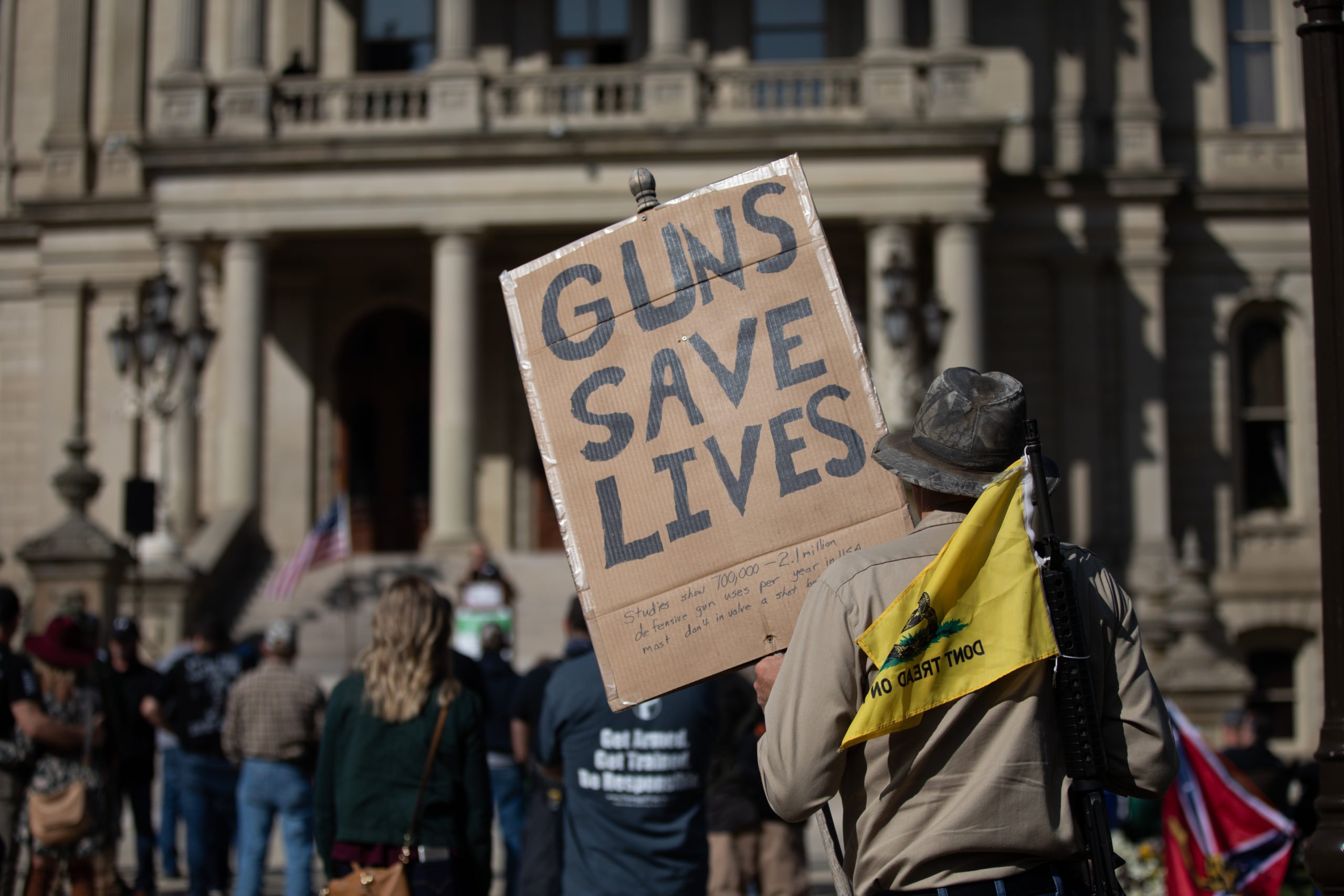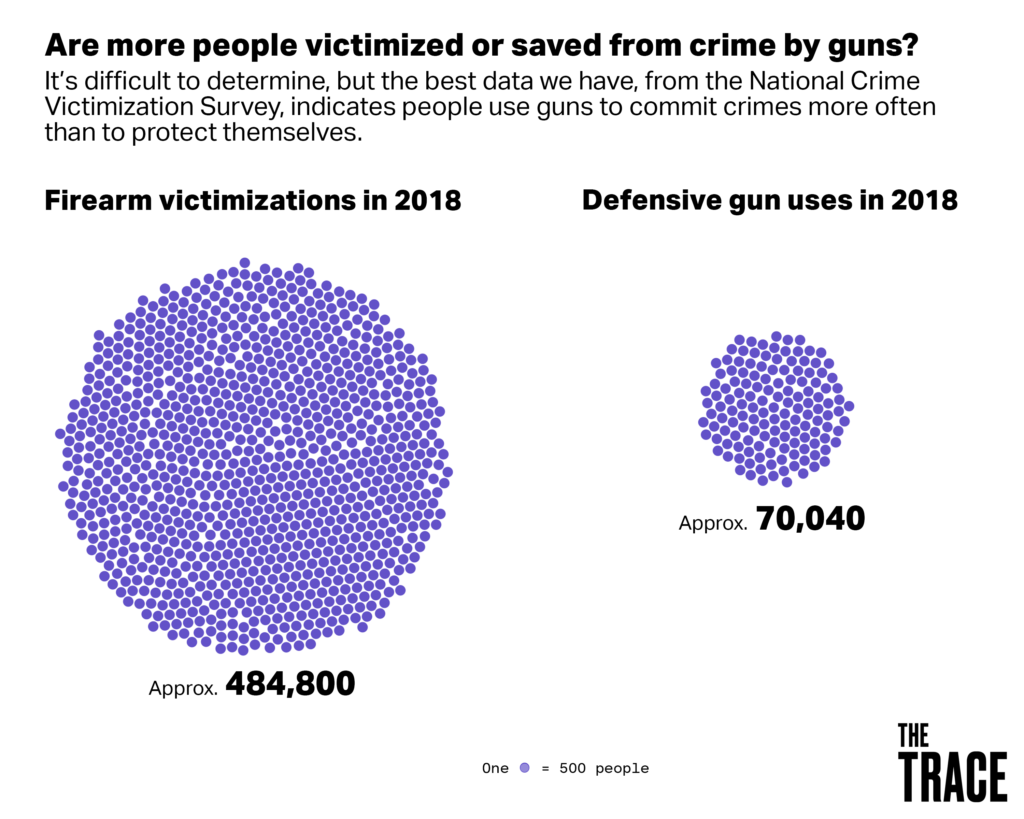2aguy
Diamond Member
- Jul 19, 2014
- 112,563
- 52,840
- 2,290
If I went into my bosses' office and told him a project was going to net between $500K and $2.8MM in profit, he'd throw me out on my ass for sloppy work.
Especially if someone else came in with an accurate figure of $70,000.

How Often Are Guns Used for Self-Defense?
Fact-checking the 'good guys with guns' maxim.www.thetrace.org
The NCVS identifies far fewer instances of defensive gun use. According to the most recent firearms violence report, published in April, 2 percent of victims of nonfatal violent crime — that includes rape, sexual assault, robbery, and aggravated assault — and 1 percent of property crime victims use guns in self-defense. According to the survey, firearms were used defensively in 166,900 nonfatal violent crimes between 2014 and 2018, which works out to an average of 33,380 per year. Over the same period, defensive gun use was reported in 183,300 property crimes, or an average of 36,660 per year.
Taken together, that’s 70,040 instances of defensive gun use per year.

More on why the anti-gun fanatics have to use the NCVS.......because it is the only study on crime that doesn't actually talk about defensive gun use....which is exactly why anti-gun fanatics use it...
The only feasible way to measure the prevalence or incidence of DGU is with surveys, given that a large share of them are not reported to the police, and police do not maintain counts of DGUs aside from the tiny fraction (<1%) that result in the offender’s death (Kleck and Gertz 1995).
---
How Discrepant Were the DGU Estimates Implied by the Hemenway Surveys?
First, it is worth noting just how different the results of these two surveys were from other national surveys. Table 1 summarizes the estimates of DGU frequency implied by the findings of 19 national surveys, including the two by Hemenway and his colleagues. All are professionally conducted surveys of probability samples of the U.S. adult population in which respondents were asked a question specifically pertaining to defensive uses of firearms. Producing an estimate of the number of annual DGUs often entailed nothing more complicated than computing the percent of Rs who reported a DGU in the survey sample and multiplying it by the U.S. adult (18+) resident population as of the year the survey was fielded. Many surveys, however, did not ask questions pertaining to the same universe of events that were covered in the better surveys. For example, some included uses against animals, though most did not. Some excluded uses by police and security guards, others did not; some included uses of all types of
----
Before discussing the gap between these estimates and those yielded by the other surveys in Table 1, it is worth first noting that the Hemenway estimates are seven to ten times the “estimate” of DGUs supposedly implied by the National Crime Victimization Survey (NCVS), of roughly 65,000 (McDowall and Wiersema 1994) – the one that Hemenway has repeatedly endorsed (Hemenway 1997; Hemenway and Azrael 2000; Hemenway et al. 2000). Even his own surveys’ results indicate that the NCVS-based “estimate” of DGUs is far too low.
The reasons for the extremely small numbers of Rs in the NCVS reporting a DGU have been detailed elsewhere (Kleck 2001), so only a brief outline is needed here.
The NCVS has never asked even a single respondent specifically about defensive use of firearms.
Instead, Rs are only asked an open-ended question about whether they did anything to protect themselves during a victimization incident, and are then asked to mention whatever specific self-protective actions they might be inclined to volunteer.
Commenting on this problem in the NCVS, Tom Smith, Research Director of the National Opinion Research Center, stated that “indirect questions that rely on a respondent volunteering a specific element as part of a broad and unfocused inquiry uniformly lead to undercounts of the particular of interest” (Smith 1997, p. 1462).
Hemenway’s own results confirm this insight, reinforcing the conclusion that the NCVS cannot provide meaningful estimates of DGU frequency.
Further, the NCVS is conducted by one federal government agency, the Census Bureau, and the Rs are told that the information will be provided to another federal agency, the Justice Department. The interviews are not anonymous – Rs know that the surveyors know their address
https://www.hoplofobia.info/wp-cont...-Estimates-of-Defensive-Gun-Use-Frequency.pdf